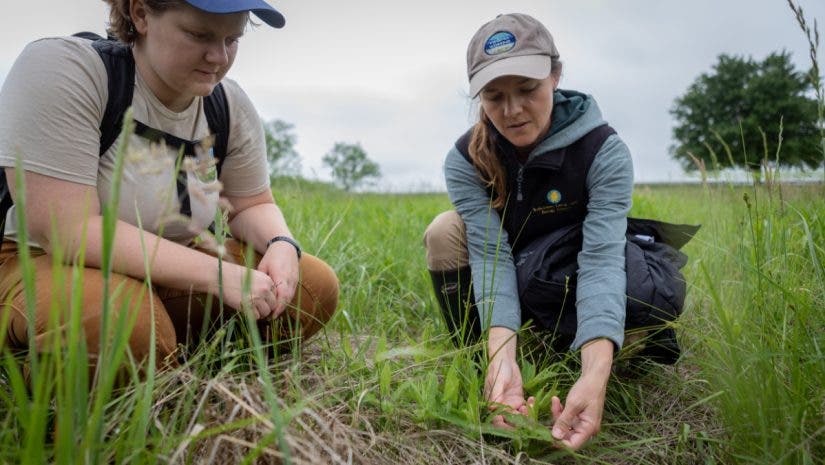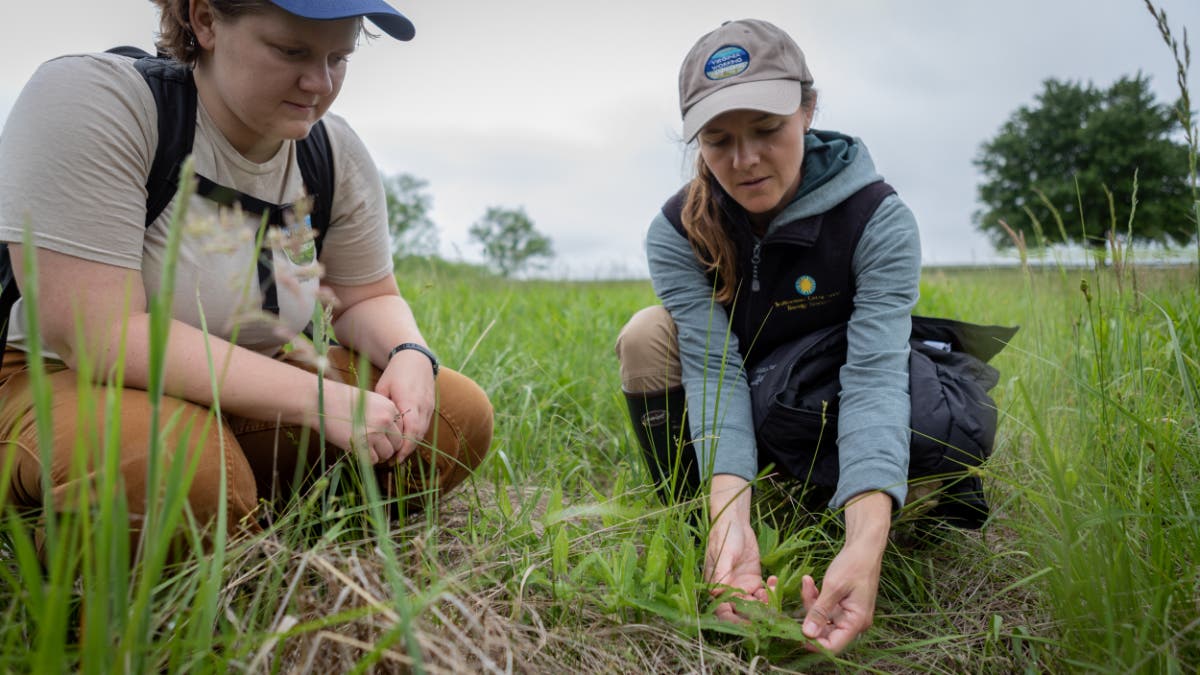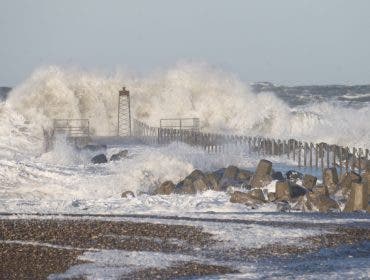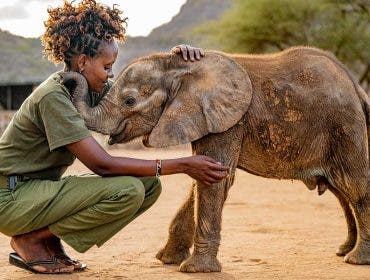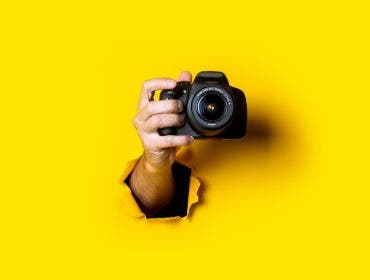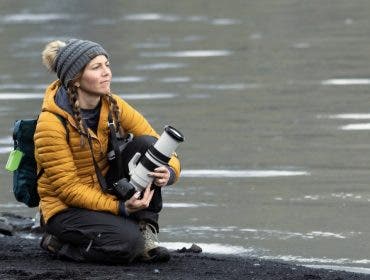When most people dream of becoming a conservation photographer for National Geographic, they envision far-flung landscapes and eye-popping megafauna—yet, as Brooke McDonough can attest, there’s an advantage to telling stories closer to home.
In 2022, McDonough, a Virginia-based National Geographic Explorer and wildlife conservation photographer, earned a career-changing grant from the National Geographic Society that focused less on remote locales and more on her own backyard.
NGS funded her photojournalism project, “The Root of the Problem: North American Lawn Culture,” which focuses on a deep-seated suburbia issue. Highly manicured, American-dream-style lawns—especially the pesticides that support them—put myriad insects at risk. While her project didn’t require a plane trip to a remote corner of the globe, it did help her carve a niche and build authority within her community and field of study.
She came face to face with this unique advantage during a recent National Geographic Storytelling Summit. “I met so many explorers who do incredible work all over the world, but many remembered me because my story is so weird and wacky,” she says. “I mean, I’m digging around in people’s front yards—but it’s so different from what everyone else is doing.”
If you’re curious about paving a career path as a conservation photographer, you’re in the right place. Read on for McDonough’s thoughts about breaking into the industry, making a name for yourself, finding the right projects, and how sticking close to home could accelerate your goals.
From Books to Backyards
While many kids dream of working for National Geographic, McDonough’s road to nature and conservation work took a more labyrinthine path. In fact, in the early days, she wasn’t a big outdoors enthusiast at all. “We used to live across the street from this beautiful nature preserve, and [my mom] would always ask me to go on walks—but I would tell her I wasn’t a fan of ‘unnecessary walking.'”
Yet she was a fan of reading. The hobby led her into English literature studies, which ultimately put her in a course that focused on environmental literature. “That was really the first time my eyes opened to [the fact that] people can work in the world of nature and conservation science without being a scientist,” she says. “It was a huge moment for me.”
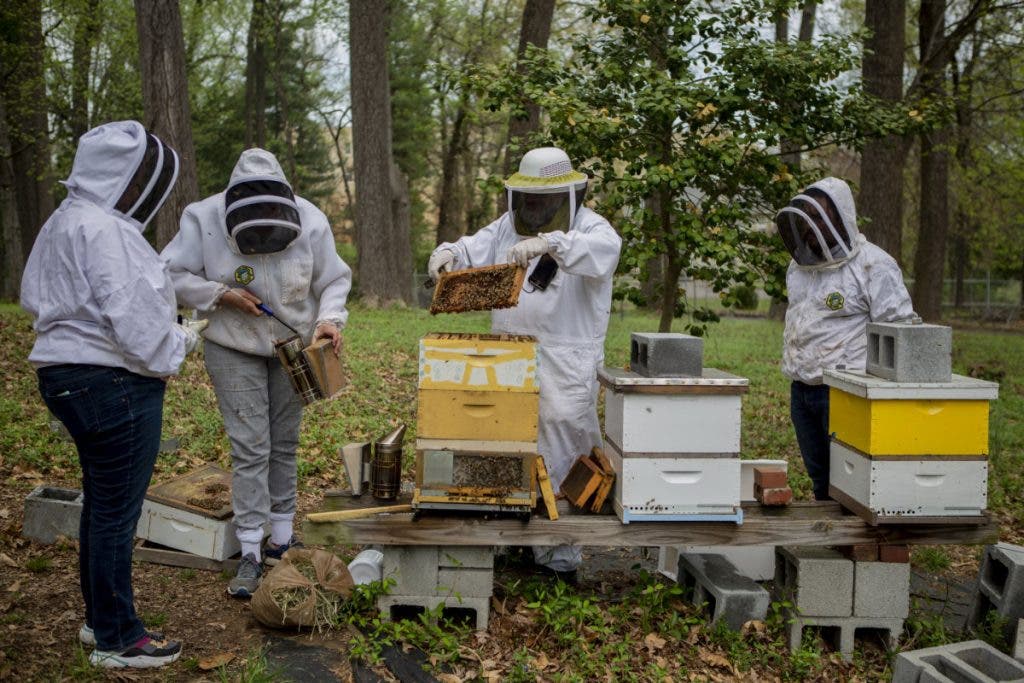
Photo by Brooke McDonough
Becoming a Conservation Photographer
Around this same time, she also dabbled into photography, which unveiled the medium’s storytelling potential. “I love stories,” she says. “Once I kind of saw that this was a possibility to be able to work in that field, I was like, ‘this is it; this is what I’m meant to be doing.’”
She eventually pursued a Master’s degree in new media photojournalism at George Washington University, where she spent a full year working on a thesis assignment—the project that catalyzed her passion for insects.
“I didn’t have a car at the time, but I’d heard about these urban beekeepers and knew I could [take Washington D.C.’s] Metro there,” she says. The assignment’s subject stemmed from necessity, but “it kind of took legs of its own.” She began learning about honeybees, then native bees, and this project led her into lawn culture. It also jumpstarted an obsession with insects.
“It was great falling into this project because insects were not something I was super gung-ho about growing up,” she says. “They were fine, but I didn’t have strong feelings one way or another. Now I’m really invested.”
Local Stories Told by Locals
This initial close-to-home project opened her eyes and curiosity to suburbia’s love of lawns, as did an assistantship role with a National Geographic photographer who was covering insect decline in the U.S. “I was learning more and more about what caused this decline, and it was one of the things I was interested in looking at—not just the doom and gloom, but why is this happening?”
Many rabbit holes later, McDonough uncovered one of the problem’s roots. “The suburbs seemed to be a big area where we have a lot of land, but we’re not using it all that thoughtfully,” she says. “I started thinking about lawns, and it’s this huge amount of space that’s not super regulated—or if it is, it’s toward being neat and manicured, but not for wildlife.”
That was her “aha” moment. She spent nearly a year photographing this lawn culture concept, largely using macro photography to show the goings-on of suburbia’s grasses and gardens, before applying for funding as a National Geographic Explorer. “I had a year to really research the idea for this grant application,” she says. “That’s where I started thinking deeply about what type of story would showcase this best.”
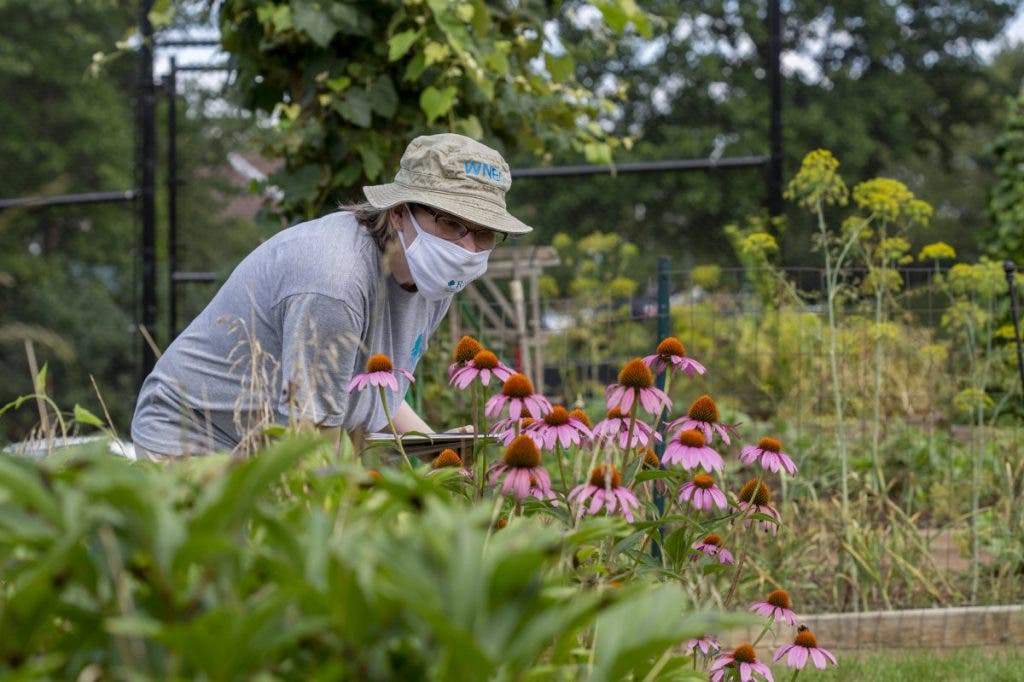
Photo by Brooke McDonough
Choosing the Right Storytelling Format
As consumers and viewers, we often see the final product, but rarely do we get a behind-the-scenes look at why the artist chose a certain storytelling format to begin with. McDonough sheds some light: “I think a lot of it stems from the action I want people to take and the scope of the story I want to tell,” she says. “For this project, I want people to change at least part of their lawn toward native habitat.” Yet the concept is “fairly intangible,” as she’s trying to get people to think beyond the deeply ingrained aesthetic of suburban lawns.
It would have been difficult to get this idea across in a film, she says, noting the message could easily get diluted. “You could do that in a photo essay, though,” she says. That’s what she ultimately chose. She sought grant funding for the project as a photo essay and noted that, in addition to the essay, she would host several community talks about lawn culture and her findings to stir grassroots change.
How Backyard Storytelling Supports Photography Growth
When McDonough embarked on her career as a conservation photographer, she had a vision of far-off places. “I always thought as an explorer, I’d be flying around the world, not hanging in my mom’s front yard,” she says. “But it’s been really good for me.”
In fact, the benefits of working close to home abound. For one, you have more time to experiment with your photography. “I’ve spent so many more days out photographing than I would have if I’d had to travel somewhere. I’ve been able to photograph across the seasons, which was really important because I wanted to show what wild areas looked like throughout the year,” she says.
It also helps her integrate into the community. “I want to really develop relationships with the people I’m working with, and that comes much more easily with just putting in time,” she says. “For the level of funding I had, to travel somewhere and really embed myself in the community would have been challenging. It’s much easier to do in the place I already live.”
The Right Voice
Additionally, a major criterion everyone, from editors to grant foundations, looks for in a storytelling proposal is why you are the one to tell this story. If it’s in your own backyard or a subject matter you’re deeply familiar with, that can give you a boost.
“It’s just a more authentic story,” McDonough says. “There are ways to go to different places and share stories in a place you don’t live, but it can be really challenging. You want to make sure, especially as a conservation photographer, where you’re trying to get action in one way or another, that you’re really careful about assuming what that action should be or telling local communities what’s ‘correct.’”
For beginners, photographing a personal project in your hometown can also help you experiment and learn your craft without the time crunch of “nailing it” before your flight home. “I’m trying again and again. I cannot tell you how many photos of bees I have on a hard drive that are terrible or out of focus,” McDonough says. “And many of the photos I have that are really eye-catching were honestly kind of mistakes.”
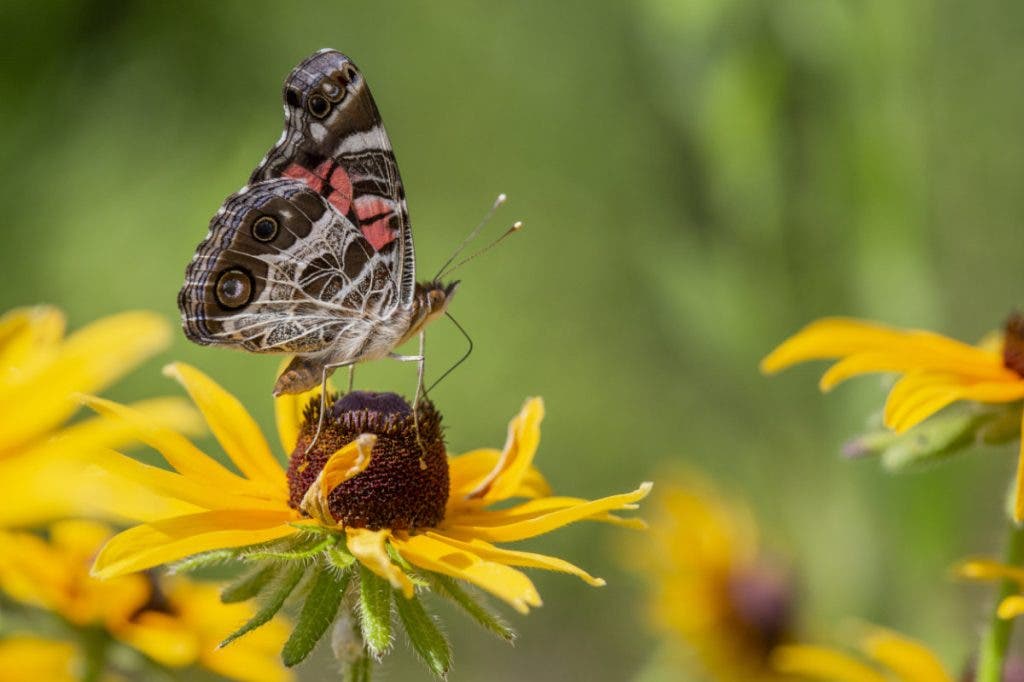
Making Macro Photography Compelling
Throughout her insect work, McDonough learned the importance of macro photography, particularly how to make these tiny subjects visually appealing. To grow her skillset, she examines the work of other photographers. “I’ve spent a lot of studying photos; I look at how my eye moves through a frame, or I’ll close my eyes then open them to see where they’re drawn,” she says.
But while many study the work of top wildlife conservation photographers, who produce jaw-dropping images of show-stopping subjects like elephants or whales, McDonough wants to see how macro-photographers make the seemingly mundane intriguing and visually compelling. It’s about looking at “a setting that’s maybe not so stunning, or naturally eye-catching, and really seeing how people are doing things in regions similar to you, or showing issues similar to yours.”
Having the right gear also plays a crucial role. For McDonough, that means using the Sony A7R5. “It’s incredible for me because of the insect-eye autofocus,” she says. She also shoots with 16-35mm, 24-105mm, and 90mm lenses, as well as the Sigma 15mm Diagonal Fisheye Art Lens.
Flash plays a major part in McDonough’s work, too. For her, it’s all about the Wescott FJ200. “It’s awesome because it’s a battery pack,” she says. “I can take it out in the field and not have to worry about where I’ll plug it in.”
As for editing, she takes a more raw and authentic approach and instead relies on production gear, particularly her lights, to help elevate these macro insect images in the field.

Paving Your Own Path
One thing McDonough is transparent about is all of the different ways she makes her conservation photography career work. She’s a writer, a photographer, and a filmmaker, and she works across multiple genres, from conservation to second-shooting wedding films, all to ensure she has enough income every month.
“There’s sometimes a feeling that you need to support yourself fully [with conservation work],” she says, but she wants people to know it’s OK if you don’t work that way. Not having an entire salary from being a conservation photographer doesn’t mean you’re a fraud. “There are different levels of comfort people have with how much risk they can take with their income,” she says. “I’m just not comfortable not knowing how much I’m going to make every month as a baseline. So that’s how I’ve structured it. I know other people who work differently, but I’ve always had a million jobs going on.”
And that—paving a conservation photography career that’s right for you—is critical for long-term viability.
“Every path is going to look different, and there are no stepping stones for this world,” she says, noting comparing your career to another photographer’s social media highlight reel can make it feel this way—but “there’s no ‘ahead’ or ‘behind,’ because there’s no path. I know I’m working on something I’m really excited about, and that’s the best I can do.”
